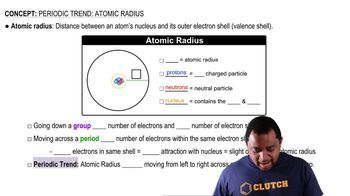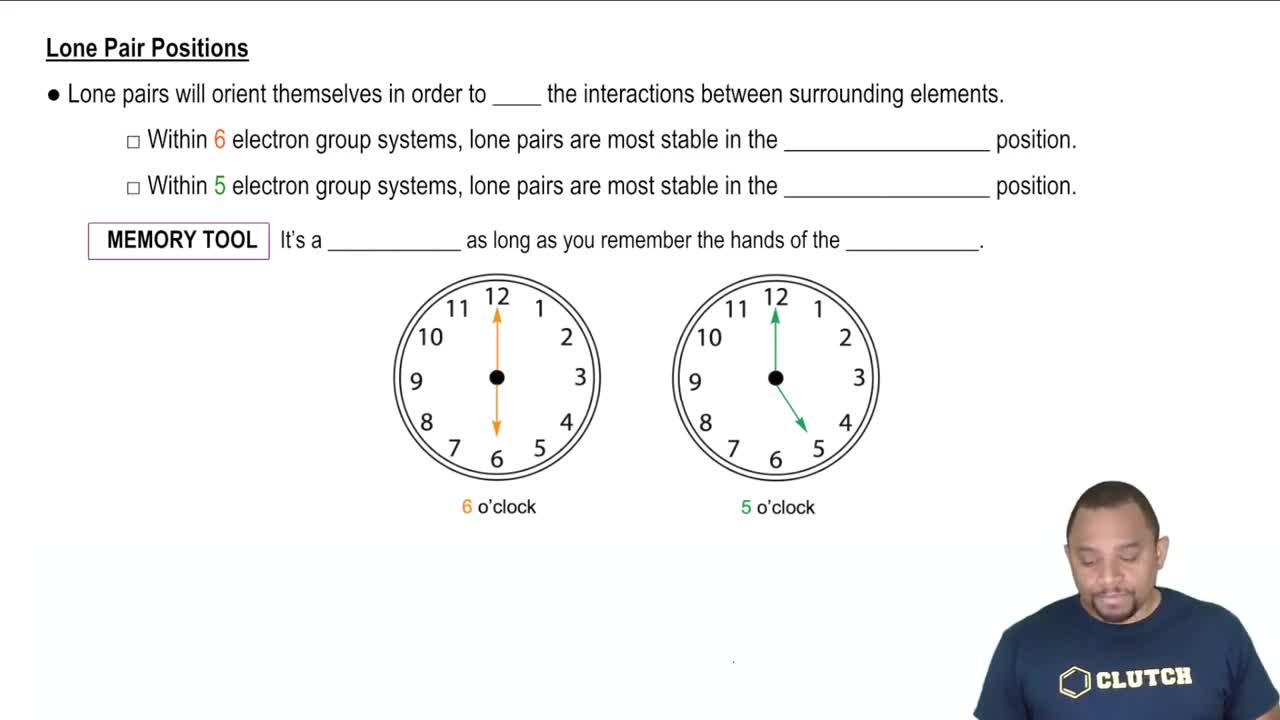Ch.22 - The Main Group Elements
Chapter 22, Problem 35
Arrange the following elements in order of increasing atomic radius: (a) Rb (b) F (c) Sb (d) S.
 Verified step by step guidance
Verified step by step guidance1
Step 1: Understand the concept of atomic radius, which is the distance from the nucleus of an atom to the outermost electron shell.
Step 2: Recall the periodic trend that atomic radius increases as you move down a group in the periodic table because additional electron shells are added.
Step 3: Recall that atomic radius decreases as you move from left to right across a period due to increased nuclear charge pulling electrons closer to the nucleus.
Step 4: Identify the positions of the given elements on the periodic table: Rb is in Group 1, Period 5; F is in Group 17, Period 2; Sb is in Group 15, Period 5; S is in Group 16, Period 3.
Step 5: Arrange the elements in order of increasing atomic radius by considering their positions and the periodic trends: F, S, Sb, Rb.
Key Concepts
Here are the essential concepts you must grasp in order to answer the question correctly.
Atomic Radius
Atomic radius is a measure of the size of an atom, typically defined as the distance from the nucleus to the outermost electron shell. It varies across the periodic table, generally increasing down a group due to the addition of electron shells and decreasing across a period due to increased nuclear charge, which pulls electrons closer to the nucleus.
Recommended video:
Guided course

Atomic Radius
Periodic Trends
Periodic trends refer to predictable patterns in the properties of elements as you move across or down the periodic table. Key trends include atomic radius, ionization energy, and electronegativity. Understanding these trends helps in predicting the behavior of elements, such as how their atomic radii change with position in the table.
Recommended video:
Guided course

Periodic Trends
Group and Period Position
Elements are organized in groups (columns) and periods (rows) in the periodic table. Elements in the same group share similar properties and have the same number of valence electrons, while elements in the same period have the same number of electron shells. This organization is crucial for understanding atomic size, as elements in lower periods have larger atomic radii due to additional electron shells.
Recommended video:
Guided course

Lone Pair Positions
Related Practice
